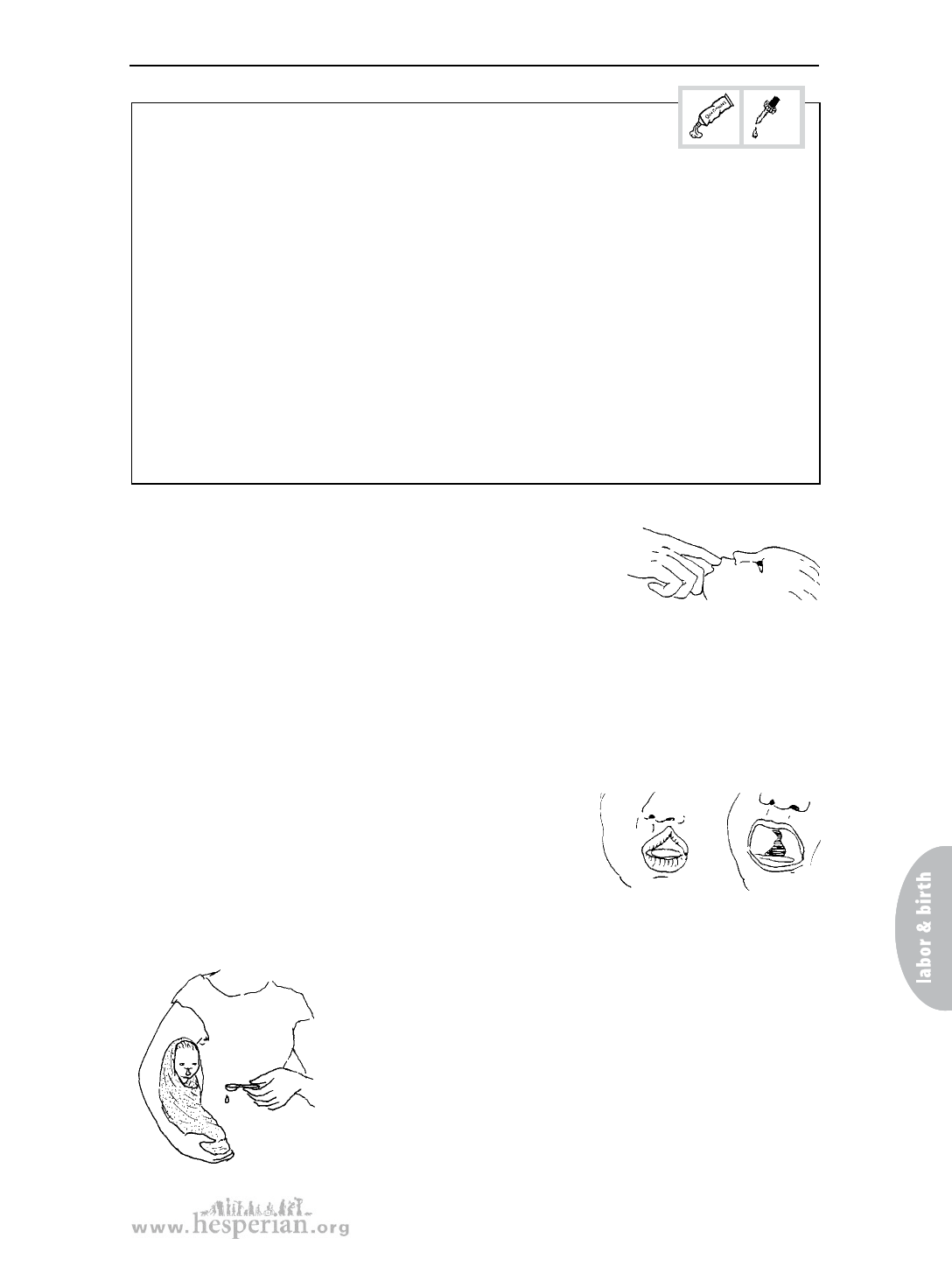
What to do for the baby
To prevent blindness
• put a line of erythromycin 0.5% to 1% eye ointment in each of
the baby’s eyes, within the first 2 hours after the birth
or
• put a line of tetracycline 1% eye ointment in each of the baby’s eyes,
within the first 2 hours after the birth
or
• drop 2.5% solution of povidone-iodine in each of the baby’s eyes,
within the first 2 hours after the birth
In some areas, people use silver nitrate (or other “silver” eye medicines) in the baby’s
eyes. These medicines stop gonorrhea blindness, but they do not stop the blindness
that comes from chlamydia. Silver nitrate also irritates the baby’s eyes for a few days.
If you can get erythromycin or tetracycline eye medicine, use one of them.
But use silver nitrate if that is all you have.
Nose and mouth
First check if the baby can breathe easily through his nose.
If not, try suctioning the baby (see page 213).
Then, gently stroke the baby’s cheek. He should turn his head toward your
finger. This is called the rooting reflex. Put a very clean finger inside the baby’s
mouth. The baby should suck on your finger. If there is no rooting reflex, and if
the baby does not suck, he may be very weak or sick. Get medical help.
Babies with cleft lip (harelip) and cleft palate
A cleft lip is an opening or gap on the baby’s upper lip, often connecting to the
nose. A cleft palate is a split in the roof of the baby’s
mouth. These problems can be fixed by an operation
when the baby is older. Cleft lip is often repaired when
the baby is 4 to 6 months old. Cleft palate is often
repaired when the baby is about 1≤ years old.
Babies with cleft lip or cleft palate may need some
cleft lip
cleft palate
help breastfeeding. For babies with cleft lip, the nipple should go deep into the
baby’s mouth, so the breast fills up the cleft. If there is still
a space in the lip, the mother can put her finger over it.
For babies with cleft palate, the nipple should go as far
back into the baby’s mouth as possible. Point the nipple to
the side of the cleft. The baby should drink with his head
up so that milk does not go into his nose. If the baby
cannot breastfeed, the mother can remove milk from her
breasts by hand (see page 285) and feed the baby with a
very clean spoon.
A Book for Midwives (2010)
261